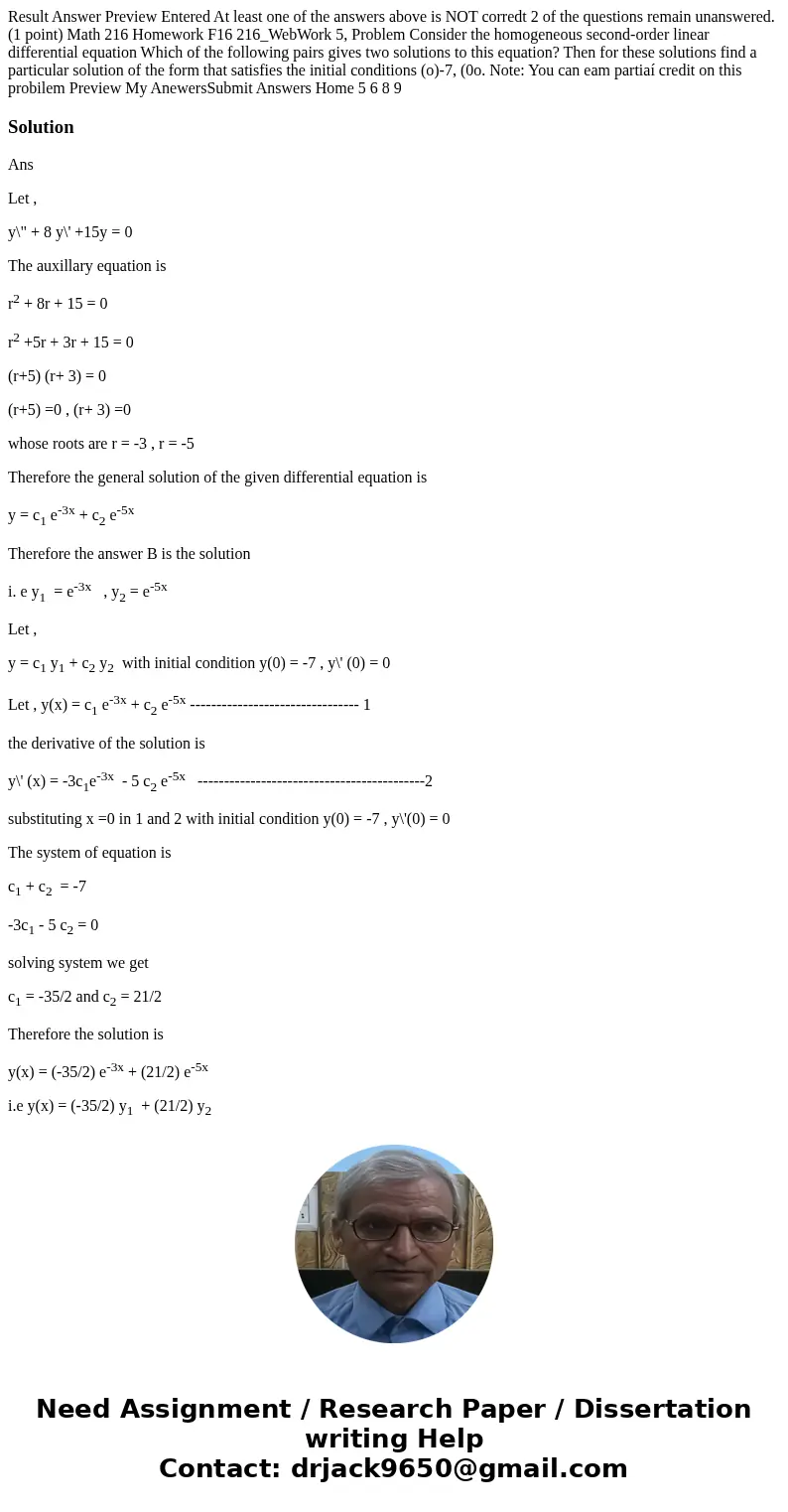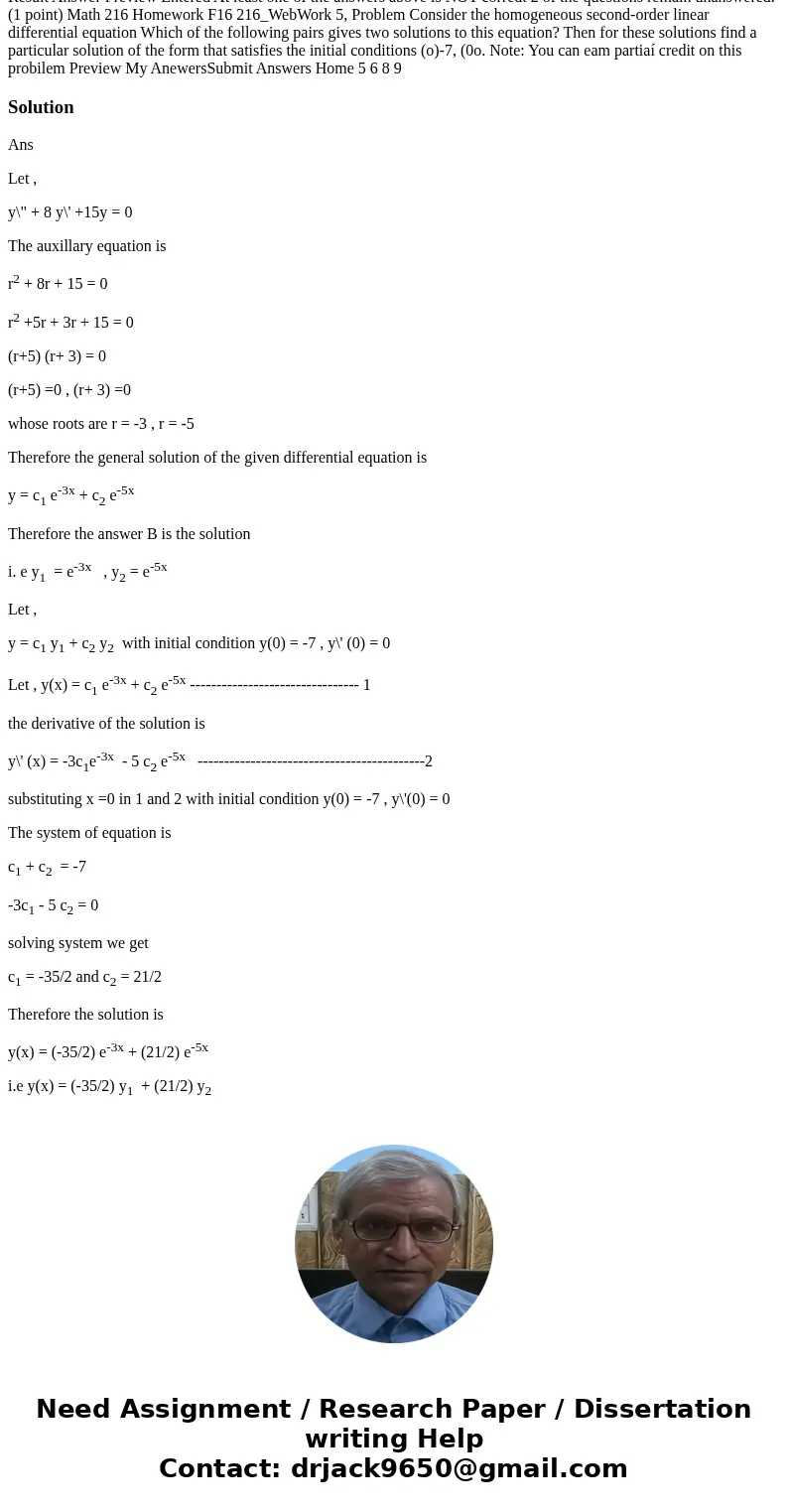Result Answer Preview Entered At least one of the answers ab
Solution
Ans
Let ,
y\" + 8 y\' +15y = 0
The auxillary equation is
r2 + 8r + 15 = 0
r2 +5r + 3r + 15 = 0
(r+5) (r+ 3) = 0
(r+5) =0 , (r+ 3) =0
whose roots are r = -3 , r = -5
Therefore the general solution of the given differential equation is
y = c1 e-3x + c2 e-5x
Therefore the answer B is the solution
i. e y1 = e-3x , y2 = e-5x
Let ,
y = c1 y1 + c2 y2 with initial condition y(0) = -7 , y\' (0) = 0
Let , y(x) = c1 e-3x + c2 e-5x -------------------------------- 1
the derivative of the solution is
y\' (x) = -3c1e-3x - 5 c2 e-5x -------------------------------------------2
substituting x =0 in 1 and 2 with initial condition y(0) = -7 , y\'(0) = 0
The system of equation is
c1 + c2 = -7
-3c1 - 5 c2 = 0
solving system we get
c1 = -35/2 and c2 = 21/2
Therefore the solution is
y(x) = (-35/2) e-3x + (21/2) e-5x
i.e y(x) = (-35/2) y1 + (21/2) y2


 Homework Sourse
Homework Sourse